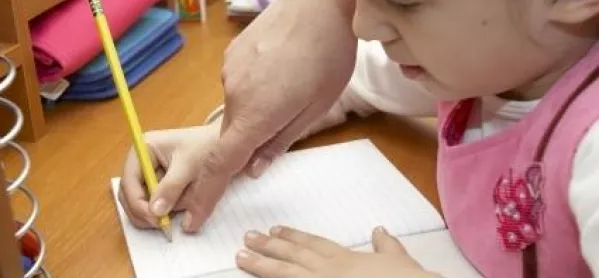Not just a matter of neatness
Bad handwriting isn’t just hard to read – it can limit exam success by as much as 40 per cent
Share
Not just a matter of neatness
https://www.tes.com/magazine/archive/not-just-matter-neatness

Pupils with bad handwriting are less likely to do well in written tests and composition exercises than their neater classmates. And boys are particularly likely to scrawl, which may explain their continued underachievement in writing tasks.
The assumption in British schools has always been that handwriting is an issue of neatness, rather than something directly related to the process of composition.
But academics from Warwick University argue that handwriting is more than the transcription of ideas; it is directly related to how we generate and process those ideas.
“Handwriting is not just about training the hand,” they say. “It is about training the memory and hand to work together to generate and correct mental images and patterns of letters, and translate these into motor patterns of letters, automatically and without effort.
“Handwriting is . a language act, rather than just a motor act.”
When pupils can write fluently, the process does not interfere with other mental processes. But if they struggle, they have to devote large amounts of memory to the task, leaving them with less capacity for generating ideas, selecting vocabulary or planning what to write.
“It may be that handwriting can crowd out the composing processes we value,” the academics say.
This idea was reinforced when they tested the handwriting speed and ability of 198 Year 6 pupils from three schools. A high proportion of results for composition reflected pupils’ results in separate handwriting tests. Boys’ handwriting scores were significantly lower than girls’, and they were more likely to be in the lowest category of handwriting ability.
This reflects national concern over boys’ underachievement in key stage 2 writing tests. This year, only 60 per cent of boys scored level 4 in the writing test, compared with 74 per cent of girls.
“At a time when improving composition . is a national priority, this suggests that intervention to improve handwriting . may be of benefit to boy writers,” the researchers say. “Early intervention is desirable - this is not an issue that improves spontaneously.”
They conclude that children with average or poor handwriting have only a 40 per cent chance of achieving level 4, the expected level for 11-year- olds, in national tests. So ignoring poor handwriting fails to address a significant and continuing obstacle to pupils’ achievement.
“UK national testing does not assess handwriting speed or fluency, and addresses only writing style and neatness,” they say. “We may be failing to assess an important aspect of writing.”
`The Links Between Handwriting and Composing for Year 6 Children’ by J. Medwell, S. Strand and D. Wray.
You've reached your limit of free articles this month. Subscribe for £1 per month for three months and get: